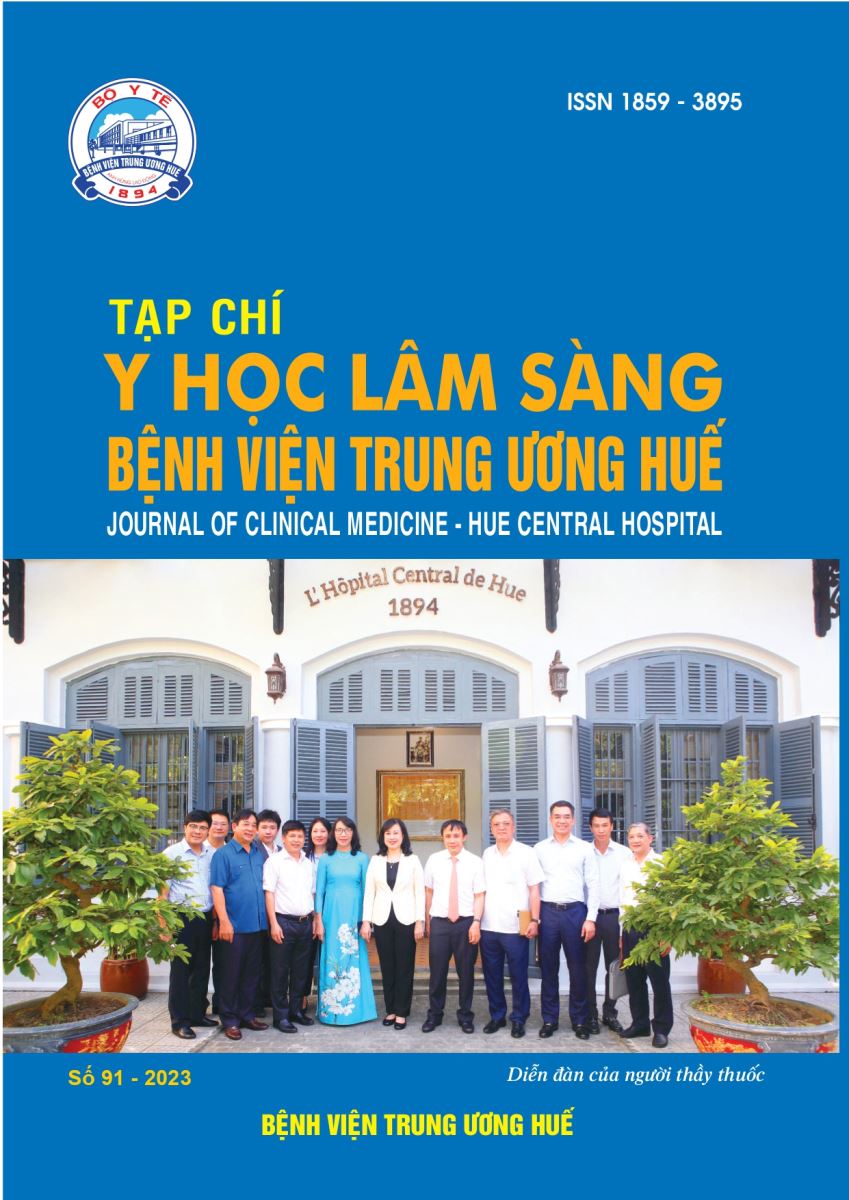Abstract
Objectives: To evaluate the results of application of pedicled flaps in reconstruction of oral cavity defects after surgery for oral carcinoma.
Methods: A prospective, clinical interventional descriptive study on 36 oral squamous cell carcinoma patients operated at Hue Central Hospital from March 2020 to May 2023.
Results: 36 pedicled musculocutaneous flaps were used in defect reconstruction after surgery of oral cancer. Four types of flaps were use, in which the temporalis fascia flap was used for 3 cases (8.3%), the temporalis myofascial flap was used for 6 cases (16.7%), the submandibular fascia flap was used for 15 cases (41.7%) and the pectoralis major myocutaneous one was used for 12 cases (33.3%). The results of the study showed that 83.3% of flaps were good. There were no serious complications after surgery. Good function recovery and low recurrence rate were recorded after surgery.
Conclusion: Using flexible pedicled musculocutaneous flaps is a suitable choice for moderate and large defects after surgery along with major organ reconstruction to preserve vital function and morphology of the oral cavity for cancer patients.
References
Stepan KO, Mazul AL, Larson J, Shah P, Jackson RS, Pipkorn P, et al. Changing Epidemiology of Oral Cavity Cancer in the United States. Otolaryngol Head Neck Surg. 2023; 168(4): 761-768.
Lip and Oral Cavity Cancer Treatment (Adult) (PDQ(R)): Health Professional Version, in PDQ Cancer Information Summaries. 2002: Bethesda (MD).
Nguyen Van D, Le Van Q, Nguyen Thi Thu N, Bui Van G, Ta Van T. Multiple primary squamous cell carcinomas of the oral cavity: A cross-sectional study in vietnam. Ann Med Surg (Lond). 2022; 80: 104224.
Jaquet Y, Higgins KM, Enepekides DJ. The temporoparietal fascia flap: a versatile tool in head and neck reconstruction. Curr Opin Otolaryngol Head Neck Surg. 2011; 19(4): 235-41.
Parmar PS, Goldstein DP. The submental island flap in head and neck reconstruction. Curr Opin Otolaryngol Head Neck Surg. 2009; 17(4): 263-6.
Tan O, Atik B, Parmaksizoglu D. Soft-tissue augmentation of the middle and lower face using the deepithelialized submental flap. Plast Reconstr Surg. 2007; 119(3): 873-9.
Chen WL, Li JS, Yang ZH, Huang ZQ, Wang JU, Zhang B. Two submental island flaps for reconstructing oral and maxillofacial defects following cancer ablation. J Oral Maxillofac Surg. 2008; 66(6): 1145-56.
Patel UA, Bayles SW, Hayden RE. The submental flap: A modified technique for resident training. Laryngoscope. 2007; 117(1): 186-9.
Milenović A, Virag M, Uglesić V, Aljinović-Ratković N. The pectoralis major flap in head and neck reconstruction: first 500 patients. J Craniomaxillofac Surg. 2006; 34(6): 340-3.
Liu M, Liu W, Yang X, Guo H, Peng H. Pectoralis Major Myocutaneous Flap for Head and Neck Defects in the Era of Free Flaps: Harvesting Technique and Indications. Sci Rep. 2017; 7: 46256.
Sơn LV, Phục hồi các tổn khuyết vùng hàm mặt bằng vạt cân- cơ thái dương. 2004, Đại học Y Hà Nội.
Vermorken JB, Specenier P. Optimal treatment for recurrent/metastatic head and neck cancer. Ann Oncol. 2010; 21 Suppl 7: vii252-61.
| Published | 26-12-2024 | |
| Fulltext |
|
|
| Language |
|
|
| Issue | No. 91 (2023) | |
| Section | Original article | |
| DOI | 10.38103/jcmhch.91.17 | |
| Keywords | Ung thư khoang miệng, vạt cân cơ thái dương, vạt dưới hàm, vạt cơ ngực lớn Oral cancer, temporalis myofascial flap, submandibular flaps, pectoralis major myocutaneous flaps |

This work is licensed under a Creative Commons Attribution-NonCommercial-NoDerivatives 4.0 International License.
Copyright (c) 2023 Journal of Clinical Medicine Hue Central Hospital

